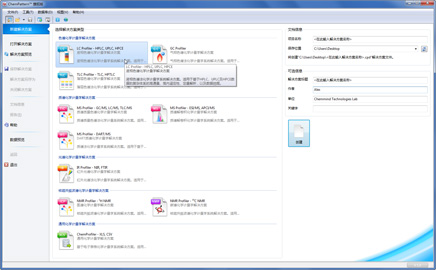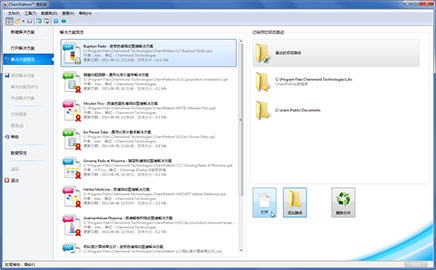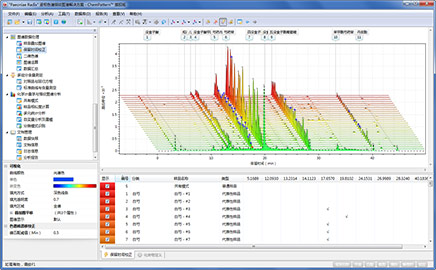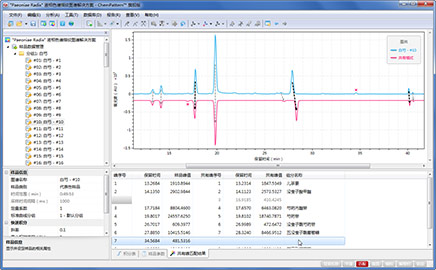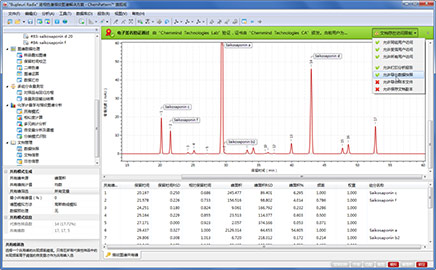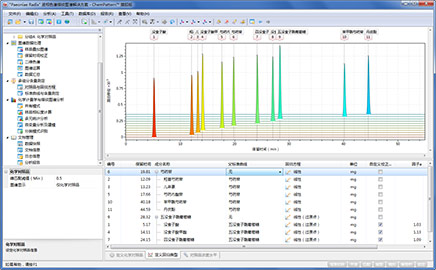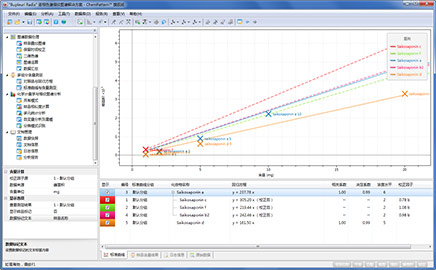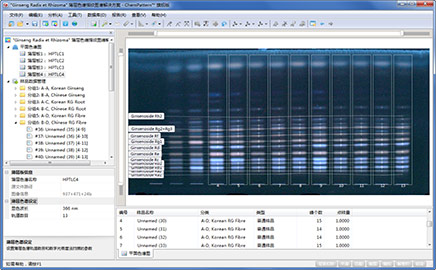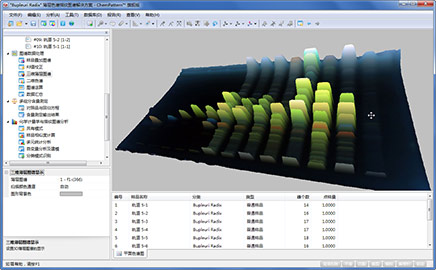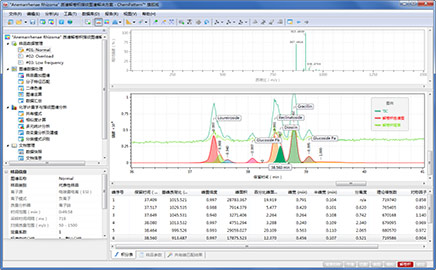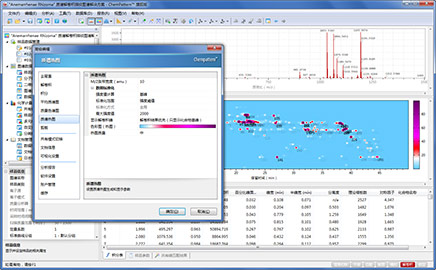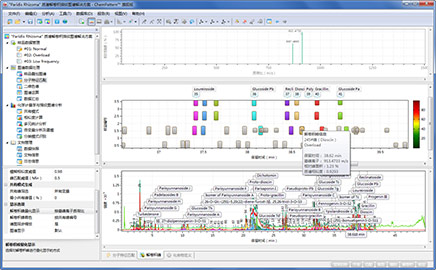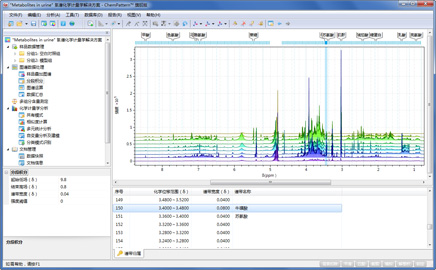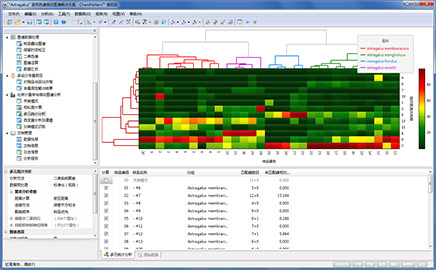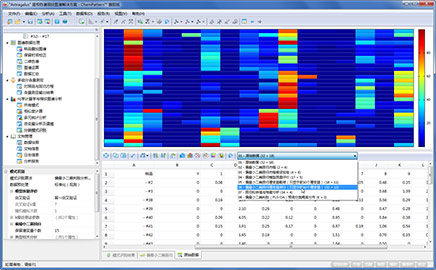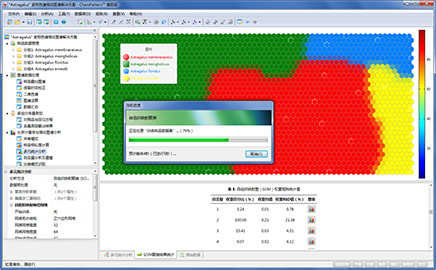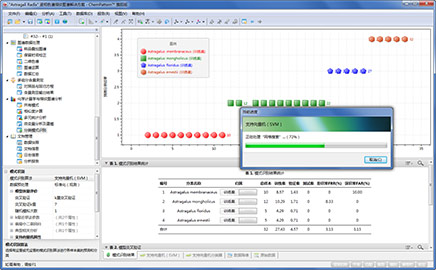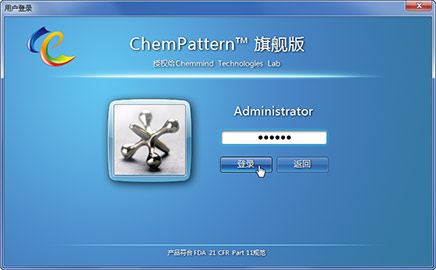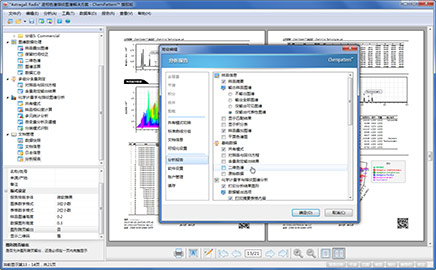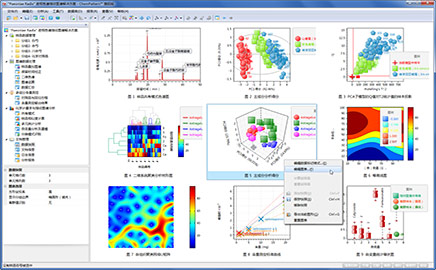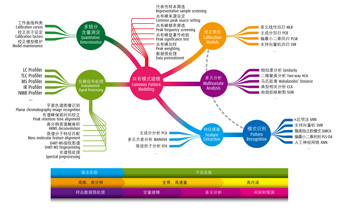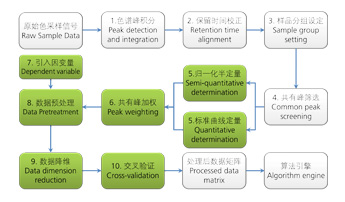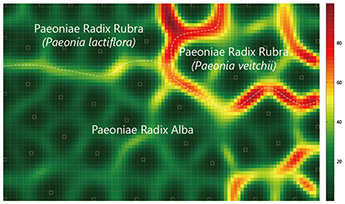ChemPattern®, an advanced chemometrics solution ©2015 Chemmind Technologies.
ChemPattern™ is an advanced chemometric and chemical fingerprinting software solution endeavors to provide one-stop solutions for the high-throughput high-content analysis of complex systems, production in-process control, qualitative and quantitative quality evaluation and characteristic analysis, as well as various informatics, omics researches and big data mining tasks. This analytical software can be applied to traditional Chinese medicine, chemical drugs, biologics, clinical medicine, food, agricultural products, tobacco, flavors and fragrances, petrochemicals, inspection and quarantine, environmental and forensic assessment, and other branch fields of analytical chemistry.
ChemPattern™, for the first time, connects and fuses the two core application systems – instrumental analysis and chemometrics – in analytical chemistry. Via standard data interfaces, it supports high-throughput pre-processing for mass data obtained through chromatography, mass spectrometry, and spectroscopy, as well as comprehensive multicomponent content determination. With high-performance numerical computation and large-scale data visualization platform, the software provides adequate application support for chemometrics and chemical fingerprint analysis, embracing multivariate calibration, multivariate statistics, regression modeling, pattern recognition, data mining, artificial intelligence, and so on. Furthermore, it fulfills the specification requirements of laboratory information management system (LIMS) and electronic data and electronic signature law (FDA 21 CFR part 11).
Following are brief introductions to the major fields and concepts involved in ChemPattern™.
Introduction to Chemometrics
Chemometrics, as a sub-discipline of chemistry with rich connotation and an emerging mutli-disciplinary field, has the object to optimize chemical measurements and experiment designs by combining the theories and means of computer science, mathematics and statistics, and extract maximum valuable information from measurement data. The third transform undergoing in analytical chemistry is closely related to the emerging and development of chemometrics.
Unlike conventional experiments where separation are achieved by chemical and physical means, also known as wet lab chemistry, in chemometrics, complex mixed information characterized by analysis objects are completely separated from mathematical dimension in order to extract and summarize the critical information associated with the essense of the objects (dry lab chemistry). Chemometric studies covered the entire process of chemical measurements, thereby provided new problem solving ideas and methods for the various sub-disciplines of chemistry. In the many areas of chemistry, both academic and industrial circles have benefited from the application of chemometrics. Detailed fields of chemometrics and their typical applications are listed in the table below.
| Sub-disciplines | Typical Applications |
|---|---|
| Traditional Chinese Medicine and Natural Medicine | Authenticity identification and quality evaluation of herbs, decoction pieces and Chinese patent medicine; chemical fingerprint analysis; material foundation study, quantitative effect of fingerprintology. |
| Chemicals Drug | Related substance analysis; rapid identification of raw medicine and intermediate; structure-activity relationship study. |
| Biologics | Peptide map fingerprint analysis; protein structure study. |
| Metabonomics | Metabolic fingerprinting and profiling of pharmacology, toxicology, physiology and pathology; metabolic characteristics model; pathway searching, etc. |
| Food Chemistry, Agricultural Products | Rapid food safety screening; detection of illegal and contraband addition; product quality control and identification; analysis of raw material and additives; flavor feature analysis; flavor and fragrance analysis. |
| Environmental Chemistry | Pollutant analysis; hazardous material monitoring; rapid detection of pollution incidents |
| Petrochemicals | Analysis of light oil, lubricating oil, residual oil and biodiesel; oil shale analysis; pollution source (oil leakage) identification |
| Chemistry and Chemical Engineering | Commercial chemical analysis; polymer identification; synthesis process control |
| Clinical Medicine | Disease metabolomics; early diagnosis of cancer |
| Jewelry and Archaeology | Scrutiny, dating, source determination and conservation of ancient paints, jade, ceramics |
| Forensic Assessment | Analysis of drugs, controlled substances, explosives, crime scenes and fire tracers. |
| Judicial Expertise | Identification of origins of paper, dyes, inks and ball-pen oil and writing time. |
Complex analysis system
Typical complex systems in analytical chemistry are diverse, uncertain and with matrix effect. Generally, the various study objects of analytical chemistry in nature are grey complex systems with some uncertain components to be measured and interference subject properties. This greyness is reflected by the variety of components and the quantitative complexity, as well as the diversification and non-linearity of the correlation. Therefore, the complicated practical problems in chemical applications, such as the conducting of effective information extraction, pattern recognition, data mining and comprehensive quality evaluation to complex mixed system objects, are always the stimulation for the development of chemometric theories and methods.
Analytical chemistry and big data science
Analytical chemistry is essentially a measurement and information science closely related to data analysis. With the rapid development of modern instrumental analysis, analytical chemistry is in the dawn of an era of big data. For instance, with a variety of high-dimensional high-resolution analytical instruments such as liquid chromatography-mass spectrometry (LCMS), a complex sample can obtain massive data in unit of Gigabyte. Most of the valuable information is bound to be lost because conventional analytical chemistry methods could not utilize them. In addition, scholars are also focusing on finding a way to integrate the sporadic and disordered chemical measurement data from different perspectives of the analysis objects and obtained by various major analytical instruments, as well as mining information from these data. Therefore, the bottleneck of complex system analysis has transited from instrumental hardware limitations to the urgent requirement for high-content big data analysis technology and software. This has also become a pressing task for all sub-disciplines of analytical chemistry.
Introduction to chemical fingerprintology
Chemical fingerprintology is a general name of panoramic complex system high-throughput high-content analysis technologies that are based on qualitative and quantitative chemometric analysis upon all related feature groups in grey complex systems using chromatographic, mass spectrometric, and spectroscopic techniques especially hyphenated technologies. With the rapid development of modern analytical chemistry, the interpretation of complex systems has entered a brand new stage of high dimension and high content. Consequently, people now have more comprehensive understanding of the complexity and diversity of study objects. Fingerprint analysis technology is different with conventional analysis methods for that instead of representing and analyzing objects from the perspective of a point (scalar represented by a few marker compounds or maximum absorption wavelength), it does these from the perspective of a certain face (multi-dimensional matrix represented by whole component information under specified circumstances). Such transition from close-up mode to panoramic mode represents the evolution of analyzing strategies and change of thoughts. From the classic micro decomposition to modern macro modeling, such transition ensures the continuous improvements in related measurement techniques and standards.

